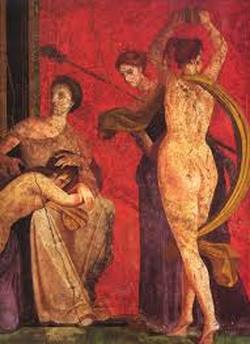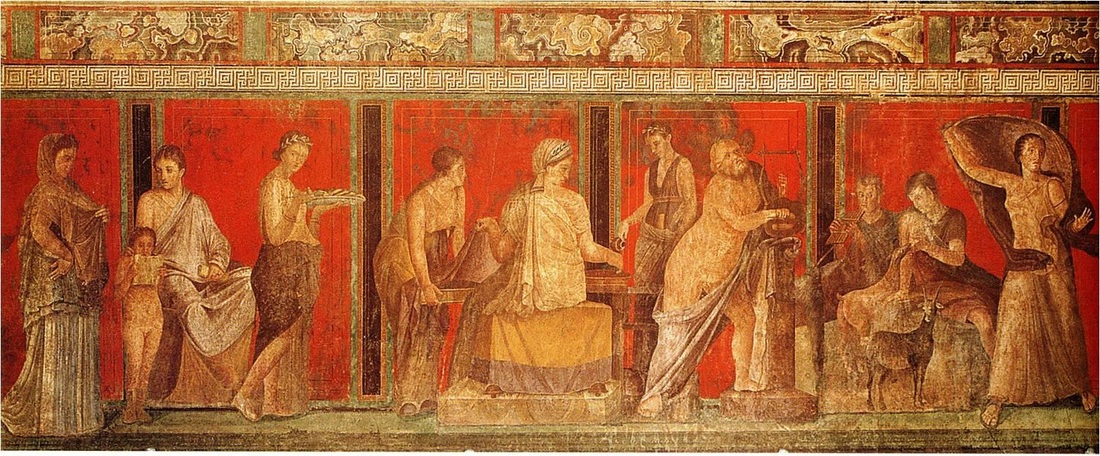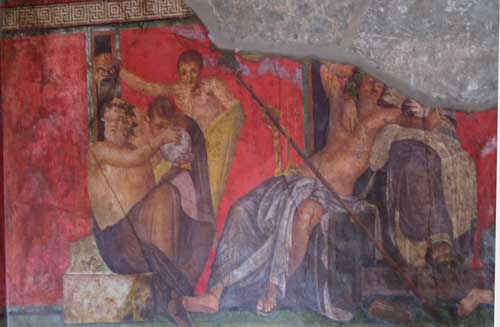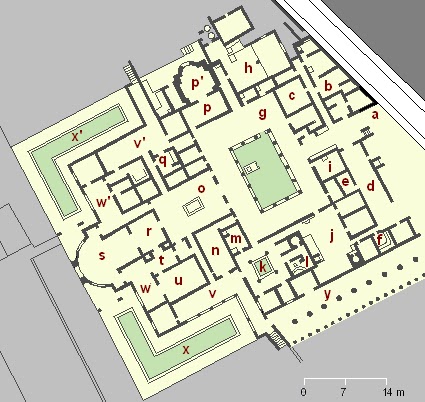villa of the mysterious
The Villa of the Mysteries is located just outside of Pompeii, north of the Ercolano Gate. Which was excavated in 1909-1910 by the owner of the land Lucius Istacidius Zosimus, a freedman of the powerful istacidius family was found, but the major part of the excavation and restoration took place in 1929-1930 after the government of Italy took over. The Villa of the Mysterious was originally built around 200 BC.
Villa dei Misteri A.K.A Villa of the Mysteries is a well preserved ruin of a Roman Villa which is located 400 meters northwest of Pompeii, southern Italy. The Villa of the mysteries is the house that grew and changed over a long period of time. The Villa of the Mysterious was originally a house built as a farm in the 2 Century B.C. but it was enlarged and renovated until it became a suburban villa. This Villa can be closely associated with Second style Architecture and Second style Decoration. The villa is situated beyond the Herculaneum. Although it was covered with ash and other volcanic material, the villa sustained only minor damage in the eruption of Mount Vesuvius in 79 AD, and the majority of its walls, ceilings, and its frescoes survived largely undamaged. The villa of the Mysteries sits on a cryptoporticus which provided a platform for the house and gave it a wide range of views of the Bay of Napels.
The Villa is named for the paintings in one room of the residence. This space may have been a triclinium, and is decorated with very fine frescoes. Although the actual subject of the frescoes is hotly debated, the most common interpretation of the images is scenes of the initiation of a woman into a special cult of Dionysus, a mystery cult[1] that required specific rites and rituals to become a member. Of all other interpretations, the most notable is that of Paul Veyne, who believes that it depicts a young woman undergoing the rites of marriage.
Villa dei Misteri A.K.A Villa of the Mysteries is a well preserved ruin of a Roman Villa which is located 400 meters northwest of Pompeii, southern Italy. The Villa of the mysteries is the house that grew and changed over a long period of time. The Villa of the Mysterious was originally a house built as a farm in the 2 Century B.C. but it was enlarged and renovated until it became a suburban villa. This Villa can be closely associated with Second style Architecture and Second style Decoration. The villa is situated beyond the Herculaneum. Although it was covered with ash and other volcanic material, the villa sustained only minor damage in the eruption of Mount Vesuvius in 79 AD, and the majority of its walls, ceilings, and its frescoes survived largely undamaged. The villa of the Mysteries sits on a cryptoporticus which provided a platform for the house and gave it a wide range of views of the Bay of Napels.
The Villa is named for the paintings in one room of the residence. This space may have been a triclinium, and is decorated with very fine frescoes. Although the actual subject of the frescoes is hotly debated, the most common interpretation of the images is scenes of the initiation of a woman into a special cult of Dionysus, a mystery cult[1] that required specific rites and rituals to become a member. Of all other interpretations, the most notable is that of Paul Veyne, who believes that it depicts a young woman undergoing the rites of marriage.
Paintings - frescoes
structure
The torcularium (h) was a wine making room where it contained two wine presses. In the picture above to the North west lies the servants quarters (b) where these rooms were built during the time of Augustus, this part of the villa forms the area for the servants. Just past the Servants quarters lies a long corridor which leads you to the original entrance to the Villa (a) two doors were at either sides which gave entrance to the rustic part of the villa, unlike the domus, the entrance to the villa, from the east, leads straight into the peristylium, and from there to the main rooms of the villa - the atrium and tablinum. This seemingly back to from form was common in villas. The impluvium (k) was filled in and became a garden which was located just outside the baths. past the gardens is the atrium Tetrastylum which has four columns at the corners of the impluvium supporting the roof. The picture above shows a sort of 'L'shape which is coloured in green which shows the ornamental garden that covers the area over the cryptoporticys, this is lit by torches through the arches which creates an underground passageway that runs beneath the villa. The Villa is highly built on a hillside that slope away to the South West towards the sea.
significance
The wall painting styles has given us valid information on the various phases of interior decoration in the centuries leading up to the eruption of Vesuvius in 79 AD, which both destroyed the city and preserved the paintings, and between stylistic shifts in Roman art. Throughout the success of styles, there is a repeat of stylistic themes. The paintings also tell a great deal about the prosperity of the area and specific tastes during the times. The main purpose of these frescoes was to reduce the claustrophobic interiors of Roman rooms, which were windowless and dark. The paintings, full of color and life, brightened up the interior and made the room feel more spacious.




